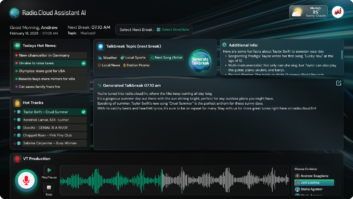Planning for the 2022 NAB Show is ramping up, and Radio World is asking exhibitors about their expectations for what will be the first in-person spring show in three years.
 FEMA, the Federal Emergency Management Agency, will be on hand in the North Hall. Manny Centeno is project manager, National Public Warning System — EAS.
FEMA, the Federal Emergency Management Agency, will be on hand in the North Hall. Manny Centeno is project manager, National Public Warning System — EAS.
Radio World: What will be your most important news or exhibit message at the convention?
Manny Centeno: FEMA IPAWS encourages all broadcasters and EAS Participants to continue supporting the Emergency Alert System (EAS) and broadcasting in times of emergencies. Broadcasters provide a tremendous public service on a daily basis, and especially during times of extreme situations. IPAWS will provide best practices to attendees about the EAS and emergency broadcasts.
RW: FEMA has a program to harden Primary Entry Point stations. At the same time, the government is promoting the use of electric vehicles. What can or should be done about the EAS reliance on AM stations, while fewer cars may have AM radios? And what should we know about the FCC’s recent changes to the rules for broadcasters regarding EAS?
Centeno: EAS messages can be heard on AM and FM radio, terrestrial digital television, cable television systems and wireline operators.
AM radio continues to be a viable pathway for dissemination of EAS messages to the public. Its ability to reach vast geographical areas originating from a single transmission point and its inherent resilience make AM radio one of the best methods for reaching the public.
FEMA operates and sustains the National Public Warning System (NPWS), which includes 77 broadcast AM and FM station participants and relays covering 90% of the U.S. population. FEMA is currently modernizing its NPWS Primary Entry Point (PEP) facilities to provide added resiliency to assure the nation can be alerted and informed in times of extreme emergencies.
FEMA encourages the automobile industry to continue installing AM and FM radios in cars. Broadcast radio saves lives and supports our national security.
Additionally, FEMA encourages the public to keep a portable, battery-operated AM/FM radio at home with fresh batteries. Broadcast radio has and will continue to save lives in times of disasters and emergencies.
FEMA also encourages broadcasters and local/state jurisdictions to work together to assure that the public continues to receive urgent alerts and warnings.
FEMA Booth: N7106







